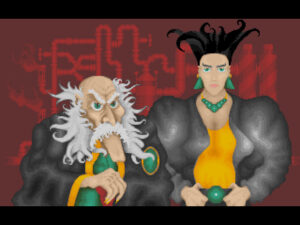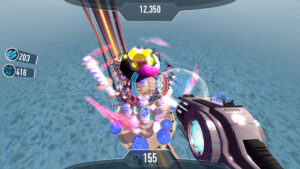I’ve been playing a fair amount of Supergiant’s Hades over the last few months, but I don’t intend to do a full series of posts about it. I feel like it’s been getting enough attention lately that reiterating every little thing about it would be unnecessary. But I do have a few stray observations I’d like to get down.
First, others have observed that Hades bears a lot of resemblance to Slay the Spire at the large scale, despite being a completely different genre: Spire is a turn-based deck-building game, Hades a fast-paced action-RPG. But both games are all about battling your way upward, through three main layers of guarded rooms followed by a smaller fourth containing the final boss, in one-sitting sallies where you’re expected to fail most of the time, Roguelike-style. Now, I said before that one of the notable things about Slay the Spire is that it manages to make each layer of its hierarchy of goals — beating the first tier, beating all three main tiers, doing the same with the three main classes, unlocking the final encounter and actually slaying the spire — feel like a real victory when you first manage it. Well, Hades does this even harder. When I escaped the underworld for the first time, I thought “Yeah! I beat the game!” When I escaped the underworld enough times to complete the main plot, and the credits rolled, I again thought “Yeah! I beat the game!” In both cases, it was accompanied by story elements that made it clear that I wasn’t really finished. Even when the credits roll, anyone familiar with the myth of Persephone knows that we’re only halfway through that story. I’m currently trying to help her complete it. I wonder what happens then? The game has got to run out of story eventually.
Speaking of familiarity with myth, I hadn’t heard of Zagreus (the player character) before playing the game, and somehow it didn’t occur to me to look him up and find out if he had any precedent in myth until I was very far into the game. Now, there’s a minor sub-plot in the game where Zagreus and Dionysus prank Orpheus by telling him that they’re really the same person, and spinning tall tales about this combined person’s exploits. Later, Zagreus tries to come clean, but Orpheus refuses to believe him, calling it false modesty and continuing to spread his lies through song. The point is, reading the opening lines of the Wikipedia article on Zagreus retroactively made that at least 20% funnier. I suspect there are subtler mythology gags that I haven’t even noticed.
One thing this game has really impressed upon me is just how many different gods of the dead there are in the Greek pantheon, and how many psychopomps. I assume that this is the result of different traditions merging: This group says Hermes takes your soul to the afterlife, that group says it’s Charon, these other guys say Thanatos, but now they’re all part of the same group so someone comes up with a big retcon in which they can all be right simultaneously.
The game has multiple kinds of in-game currency, and the interesting thing about them is that they’re mostly but not entirely separate. There’s gemstones, which mainly buys cosmetic enhancements to the main house, and shards of pure darkness (which is somehow purple), which you use to upgrade your character, and nectar, which you gift to other characters to improve your relationship, and titan blood, which upgrades weapons. To some extent, these are convertible, but I found I generally wanted to use my gems as gems rather than using them to buy some other resource, even though I didn’t really care much about changing the house decor for its own sake. But the weird part really comes in with the diamonds. Diamonds are normally gained by defeating the level 2 boss, which you can do only once per sally. You only ever have a few of them at a time. I’ve found two main uses for them: buying out the contracts that Hades made with certain characters, and some of the more expensive pieces of furniture. The former affects story (and can have mechanical rewards as a side effect), the latter might sometimes affect the story but usually doesn’t. And yet, I find myself sometimes splurging on the cosmetic effects, rather than saving up to help my friends! The closest I can come to justifying this is by calling it curiosity.
The game starts in media res, leaving out any opening cutscene in favor of getting right into the action. A lot of what you learn about the backstory is learned through suggestion and implication rather than stated outright, at least at first — you suspect that Zagreus is deceiving the Olympians long before this is stated outright. And in some cases, the secrets that eventually come out are ones that the player is likely to know already, even when the player character doesn’t. The very fact that Zagreus doesn’t know that Demeter is Persephone’s mother, even after talking to each of them independently multiple times, is itself one of those bits of backstory that the player learns by implication.
Orpheus repeatedly refers to Eurydice as his “muse”. When you finally meet Eurydice, she informs you that in fact she wrote most of Orpheus’ material. But when you think about it, isn’t that what he said? The poets of antiquity invoked the muses in terms like “Speak through me” and “Whisper into my ear”. They always gave the muses full credit as the real authors of their works, the artist being merely a vessel. Something to bear in mind whenever an artist calls someone “my muse” in real life.
 Comments(0)
Comments(0)
